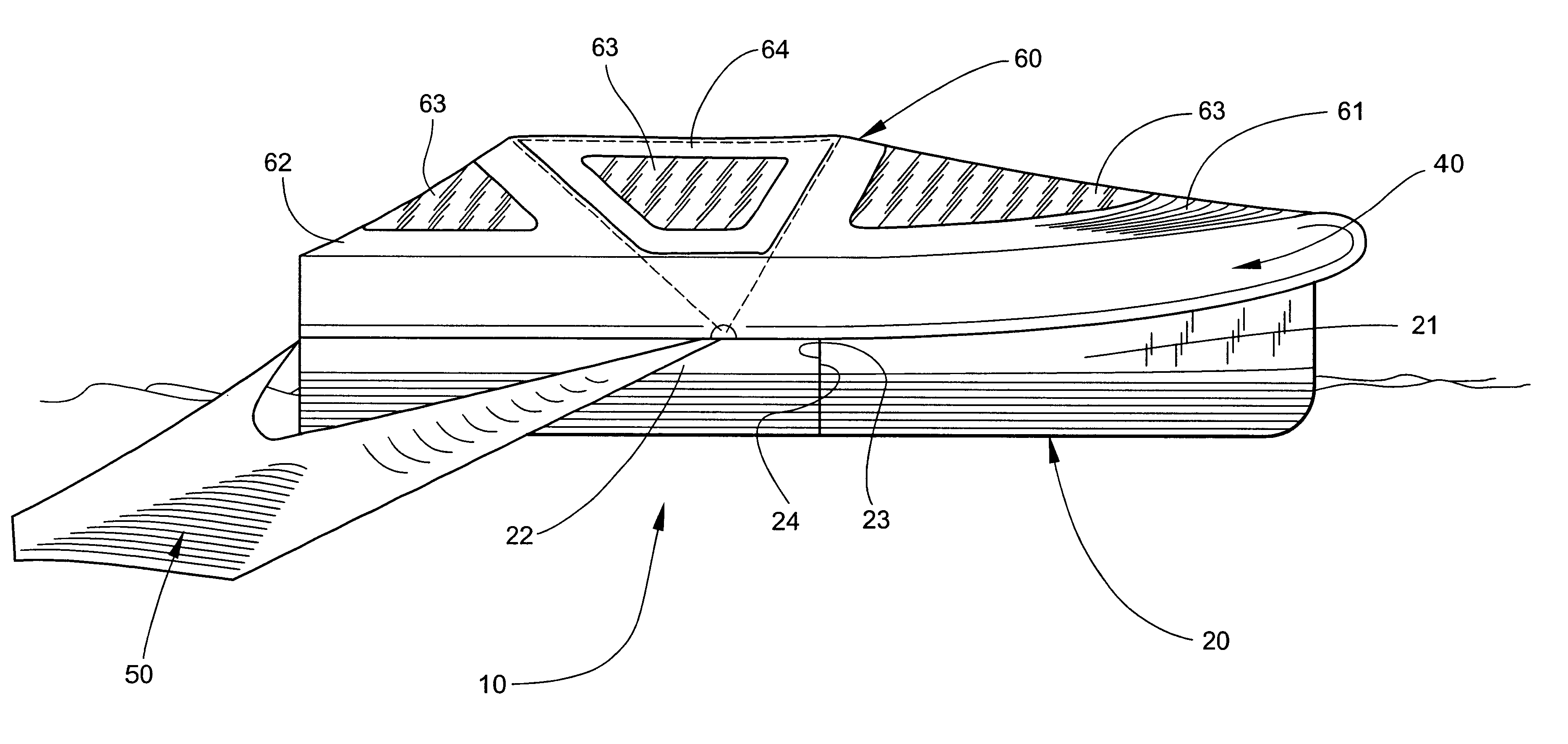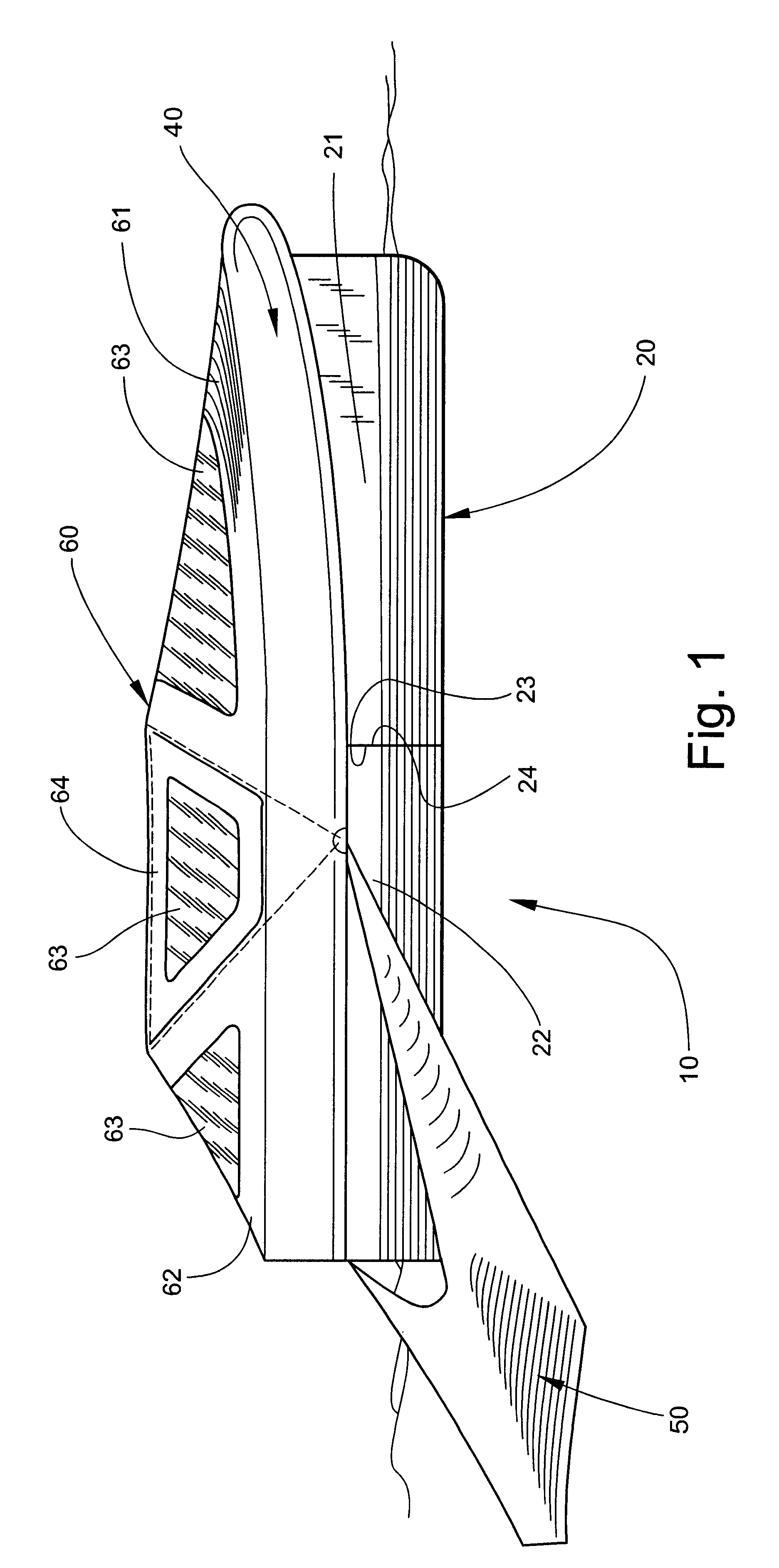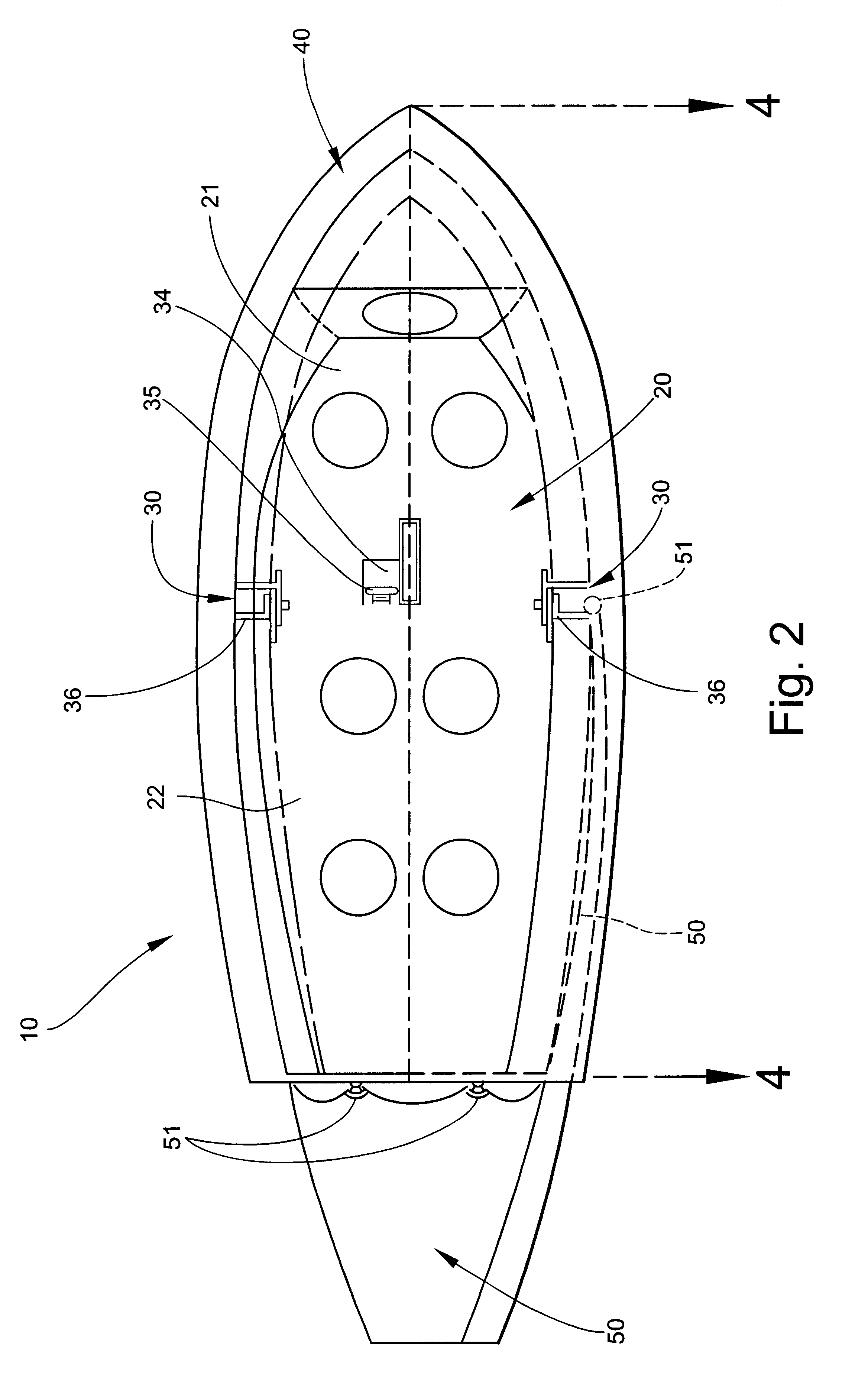Folding rigid-inflatable boat
a rigid-inflatable boat and folding technology, which is applied in the field of folding rigid-inflatable boats, can solve the problems of limited space or budget for mariners, inability to own both a dinghy and an emergency auxiliary watercraft, and craft are rarely optimally designed for emergencies, so as to improve the resistance to capizing or excessive hull rolling, and enhance the barrier against water intrusion
- Summary
- Abstract
- Description
- Claims
- Application Information
AI Technical Summary
Benefits of technology
Problems solved by technology
Method used
Image
Examples
Embodiment Construction
Referring now specifically to the drawings, a boat according to the present invention is illustrated in FIG. 1 and shown generally at reference numeral 10. The boat 10 is formed using commonly available materials and components which may be easily and inexpensively manufactured and supplied, and broadly includes a hull 20, a hinge element 30 (see FIG. 2), inflatable topsides 40, a drogue 50, and a canopy 60. As shown in FIG. 1, the hull 20 is preferably round-bottomed and designed to be driven primarily by oar or sail. However, the hull may also be V-bottomed and designed to be primarily engine driven. The hull 20 is preferably formed from a composite material such as one including fiberglass, KEVLAR, composite carbon fibers, wood, formed plastic such as PVC, metal and the like. The hull 20 includes a bow section 21 and stern section 22 joined together along centrally disposed joint edges 23 and 24, respectively. The bow section 21 is highly swept in order to enhance how the boat 10...
PUM
| Property | Measurement | Unit |
|---|---|---|
| Electrical resistance | aaaaa | aaaaa |
| Buoyancy | aaaaa | aaaaa |
| Stiffness | aaaaa | aaaaa |
Abstract
Description
Claims
Application Information
 Login to View More
Login to View More - R&D
- Intellectual Property
- Life Sciences
- Materials
- Tech Scout
- Unparalleled Data Quality
- Higher Quality Content
- 60% Fewer Hallucinations
Browse by: Latest US Patents, China's latest patents, Technical Efficacy Thesaurus, Application Domain, Technology Topic, Popular Technical Reports.
© 2025 PatSnap. All rights reserved.Legal|Privacy policy|Modern Slavery Act Transparency Statement|Sitemap|About US| Contact US: help@patsnap.com



